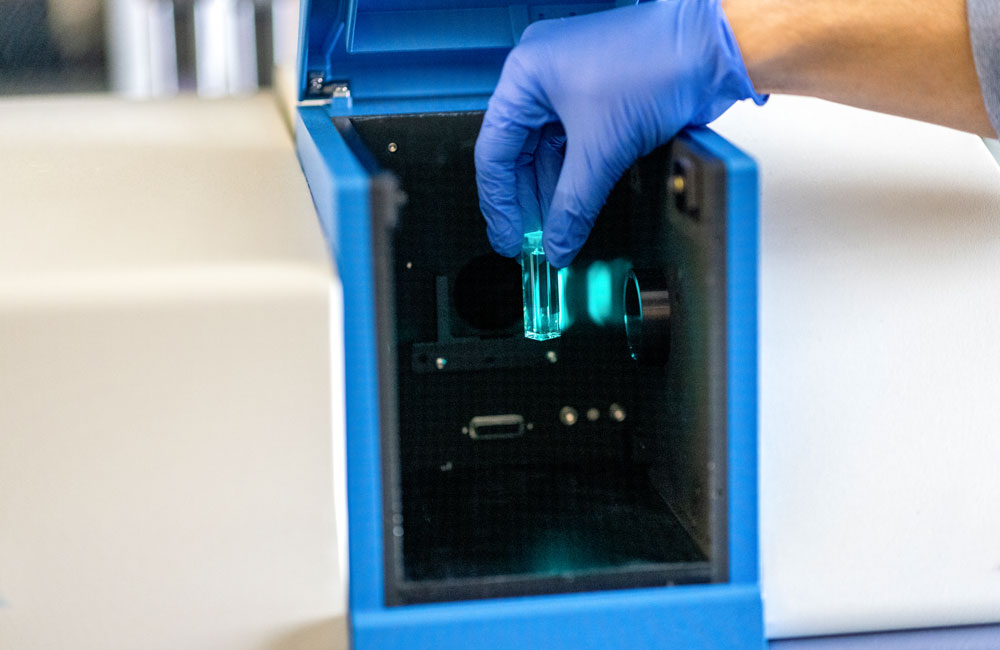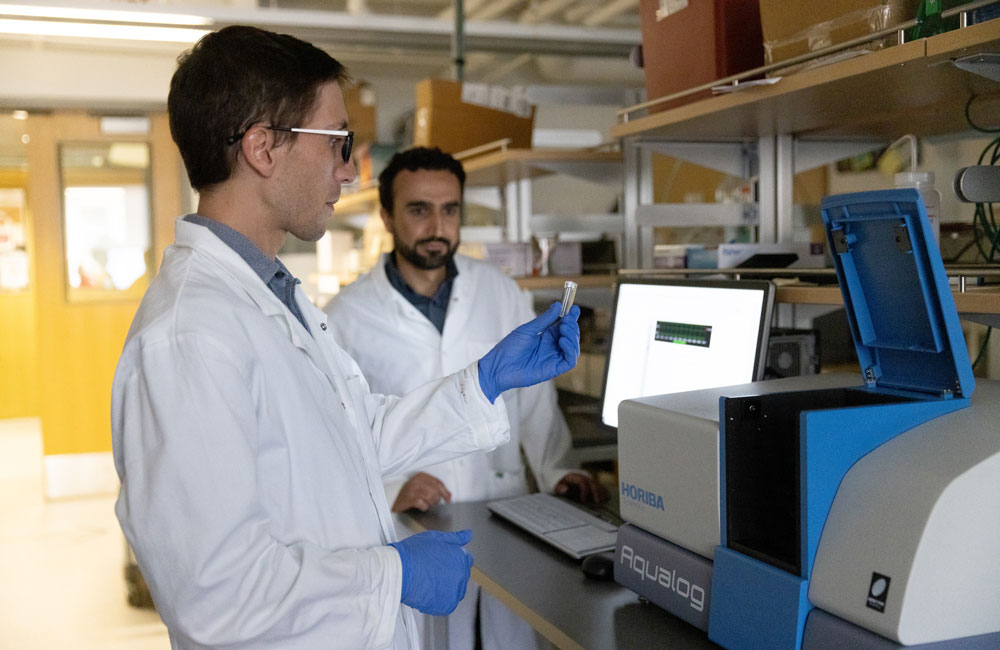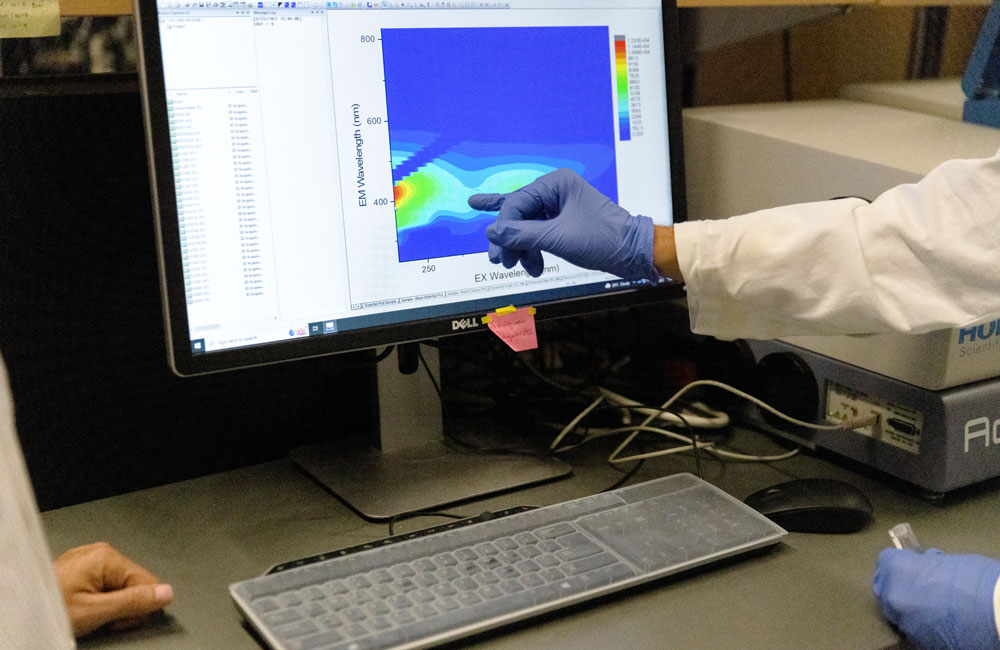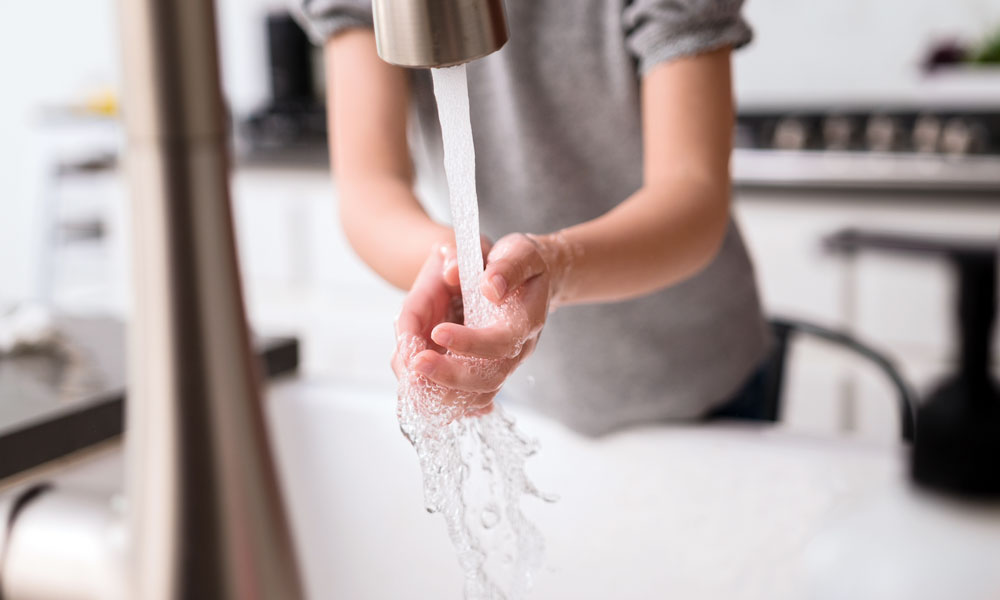
FROM TRAFFIC AND STREET LIGHTS TO SMART PARKING and waste management, today’s cities rely on a complex and dynamic system of sensors to run efficiently. While smart water meters have been around for decades and have seen considerable success managing water and sewer utilities, Dr. Nicolás Peleato knew more could be done in terms of wireless water quality monitoring.
“I wanted to know: can we collect more data to control water quality to further protect public health? And is there a business case for cities to adopt smarter water monitoring technology?” asks the Assistant Professor with UBCO’s School of Engineering. “I think the answer is yes.”
Dr. Peleato’s questions ultimately evolved into a partnership with fellow School of Engineering Assistant Professor Dr. Anas Chaaban, the Natural Sciences and Engineering Research Council of Canada, national communications technology company TELUS and the Regional District of North Okanagan. Their collective goal is to leverage advances in wireless technology and sensors to better understand the quality of water closer to people’s taps—a unique research endeavour in the traditionally conservative field of water quality monitoring.
Dr. Peleato and Dr. Chaaban are proposing the use of economically feasible sensors throughout the water distribution system, leading from the treatment plant to the final point of distribution; the sensors will send data instantaneously through TELUS’ 5G network. “Most big cities have 5G,” says Dr. Chaaban. “It’s special because it enables massive machine-type communication; it not only connects people but also machines, sensors in our cars and the water distribution system, transportation, traffic lights, electricity—the list goes on and on. One house alone could have hundreds of sensors for different applications, so we need to be able to connect everything and transmit that data quickly to a usable platform.”
This more frequent monitoring of water pipes means that water quality can be checked from many locations. “With more data available, maybe we’ll observe some distinct properties of water quality. Then we can use this information to predict actions that will prevent future anomalies in the system,” Dr. Chaaban says.
“Take the example of a water utility that needs to ensure clean water after a flood, and the water needs to have a certain level of chlorine by the time it reaches the tap. Currently, utilities often have to add excess chlorine at the treatment stage or chlorine pumping stations so levels are sufficient at the point of distribution,” explains Dr. Peleato. “But if we have sensors throughout the water system that communicate wireless and instantaneously with one another, then we can better dial in the treatment. So, for this example, we could perhaps add less chlorine.”
But there’s more than just a protective public health benefit to this research. As Dr. Chaaban points out, by using more smart sensors to monitor chlorine residuals, turbidity and other relevant water quality indicators closer to the point of use, there are also cost savings for utilities which can be passed on to the final consumer. “Cities can save money on treatment options because they can deploy treatment plans based on the actual data obtained.”
Dr. Peleato adds that some cities—especially older ones—can lose up to 20 per cent of water in their pipes, leading to financial losses and unneeded expensive infrastructure upgrades. “Using distributed sensors can also help with quantity accounting. If we can identify where leaks happen, that will lead to more timely repairs. This reduces water loss and property damage, and also helps utilities focus their spending decisions on infrastructure that is truly at the end of its life.”
An important aspect of the research will develop models to help the software quickly and accurately respond to data, allowing for real-time responses sent through TELUS’ mobile network. Dr. Peleato points to the idea of creating a digital twin of various interconnected city systems like traffic, electricity and water utilities, “so you can play in the digital space without actuating change. This gives us the freedom to explore many alternatives and see the impact of changing one process in the system without impacting anything else. That’s attractive in a water system. For example, we can model what it would look like to reduce chlorine levels without actually impacting the system.”
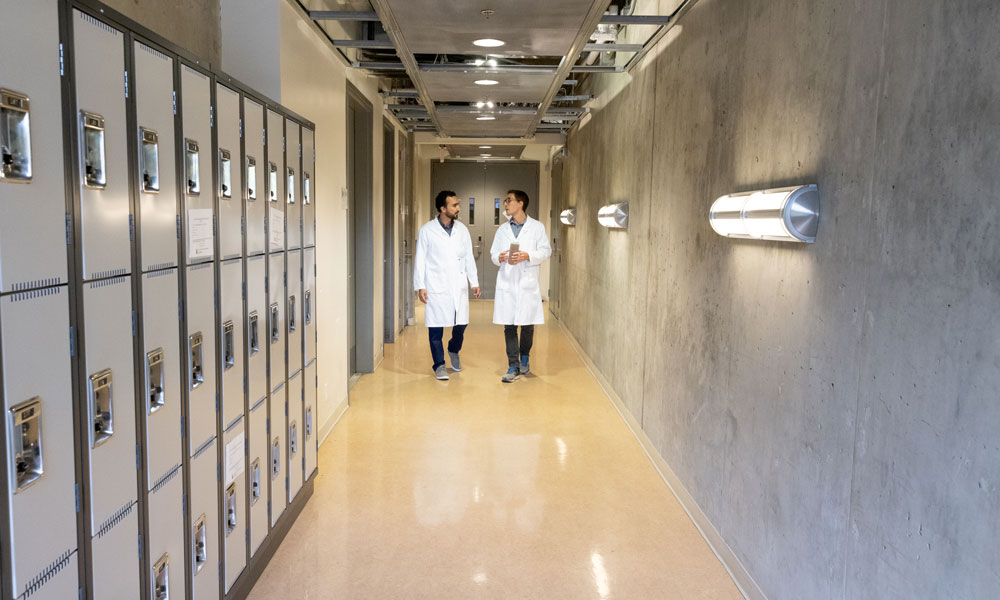
Dr. Anas Chaaban and Dr. Nicolás Peleato are bringing together their varied research expertise to make drinking water safer.
TELUS is currently working on the development of Smart City technologies in urban and rural applications to enhance the lives of residents through improved safety and better connectivity. Dr. Peleato and Dr. Chaaban’s project proposal was a perfect fit for the technological innovation focus of TELUS, which was looking to support novel applications enabled by 5G.
“Through this project, we’re bringing together our leaders in technology with UBCO’s research expertise to improve the lives of British Columbians, and support the region in becoming digitally enabled with smart technology solutions,” says TELUS Chief Technology Officer Ibrahim Gedeon.
As for the future, Dr. Peleato and Dr. Chaaban both say they hope the sensor technology and software interface will be developed to one day allow consumers to know the water quality directly at their taps—critical information, especially in light of climate change and increasing numbers of natural disasters that are impacting water supplies.
“We want consumers to have the greatest confidence possible in their drinking water,” says Dr. Peleato.
